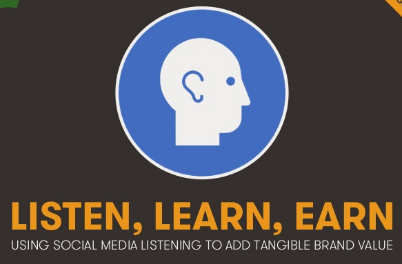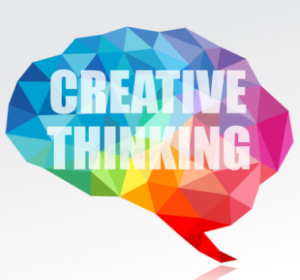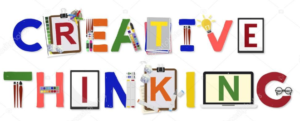My father used to tell me that you can’t learn much of anything with your mouth open. A truer statement was never uttered. You must learn how to listen and continually refresh this skill.
Successful people must be effective communicators. That means they have to know how to speak and write clearly—and it also means they also have to know how to listen. Most of us don’t think of listening as a communication skill, but it’s the most important.
Which communication skill do you use most frequently? One of the most critical skills of successful people whether in the business world or private life is their ability to communicate effectively. The most important component of better communications? Active listening skills.
Here is a short video that illustrates this point.
Is that a surprise to you? It shouldn’t be. Listening is the communication skill most of us use the most frequently.
Therefore, listening is one of the most important skills you can have. How well you listen has a major impact on your job effectiveness and on the quality of your relationships with others.
We listen to obtain information. We listen to understand. We listen for enjoyment. We listen to learn. Given all this listening we do, you would think we’d be good at it!
In fact, most of us are not, and research suggests that we remember between 25 percent and 50 percent of what we hear. That means that when you talk to your boss, colleagues, customers or spouse for 10 minutes, they pay attention to less than half of the conversation. Amazing fact isn’t it?
Various studies stress the importance of listening as a communication skill. A typical study points out that many of us spend 70 to 80 percent of our waking hours in some form of communication. Of that time, we spend about 9 percent writing, 16 percent reading, 30 percent speaking, and 45 percent listening.
You don’t even need exotic examples. Visit a restaurant and see how many people you can count checking email on their phone while carrying on a “conversation” with their dinner partner.
Maybe that’s OK. But if you’re an employee, conversations are an important way you get your work done. And you can’t have a conversation without listening to your peers.
Listening is not just a way to find things out. It’s also a sign of respect. So send the message that your conversation partner is valuable. Listen like you mean it.
Turn off, put away, or turn away from any screens. They’ll distract you despite your best intentions.
The way to become a better listener?
Practice active listening. This is where you make a conscious effort to hear not only the words that another person is saying but, more importantly, try to understand the complete message being sent.
In order to do this, you must pay attention to the other person very carefully.
You cannot allow yourself to become distracted by whatever else may be going on around you, or by forming counter-arguments that you’ll make when the other person stops speaking. Nor can you allow yourself to get bored, and lose focus on what the other person is saying. All of these contribute to a lack of listening and understanding.
The best people are skilled at listening—here’s how they do it:
There are twelve key elements of active listening. They all help you ensure that you hear the other person and that the other person knows you are hearing what they say.
Pay attention
Give the speaker your undivided attention, and acknowledge the message. Recognize that non-verbal communication also “speaks” loudly.
Listen to learn

In most exchanges, people simply react to the latest comment — a logical and often effective approach. But the best leaders are listening to learn. They don’t track conversations as a back-and-forth but as a path to new information. Listening, learning and putting into practice what you’ve learned will always be the best way to build success.
Respond appropriately
Active listening is a model for respect and understanding. You are gaining information and perspective. You add nothing by attacking the speaker or otherwise putting him or her down.
Interpret the silence
Sometimes the most important thing in communication is hearing what isn’t said. Listen for awkward pauses, omissions, hesitation. When you do, you’ll become aware of things you haven’t heard before.
The most successful people I know are the ones who do more listening than talking. Great communication is more about hearing others than it is about being heard yourself.
Show that you’re listening
Use your own body language and gestures to convey your attention.
Provide feedback
Our personal filters, assumptions, judgments, and beliefs can distort what we hear. As a listener, your role is to understand what is being said. This may require you to reflect what is being said and ask questions.
Give your full attention
Most people like to speak, but it’s far more rewarding to listen with your full attention. You retain more, and people talk more—because the sincerest form of respect is actually listening to what another has to say.
Defer judgment

Interrupting is a waste of time. It frustrates the speaker and limits a full understanding of the message.
Listen to understand
Most people listen with the intent to reply in front of their mind. But true leaders know that in order to empathize and connect with others, you have to first understand them, and that understanding comes from good listening.
No interrupting
Most people have a genuine desire to be helpful, so it’s always tempting to chime in when someone’s speaking. But when you jump in to be helpful, you’re actually robbing them of the chance to fully express themselves and solve the problem on their own. Instead of rushing to respond when someone else speaks, try to zero in on what they’re actually saying. You can always offer help later if it’s still needed.
Form connections
The best listeners have developed their ability to hear and form connections—and then articulate the connecting points. When you listen and you are able to form connections with what is being spoken, you’ll find you’re well prepared to help people put their thoughts in context and decide what to do next.
Without needing to reply
If you want to be known as a great communicator, you have to learn how to listen without thinking about your reply. As the old saying goes, we have two ears and one tongue. Focus entirely on understanding what’s being said.
The bottom line
Most of us are poor listeners for a variety of reasons. We have had little training and few training opportunities exist. We think faster than others speak. Listening is hard work. And most of all it takes lots of practice.
It’s a challenge to be a good listener. But good listeners get big rewards.
Conversations are how you communicate and grow relationships. Listening is an important part of any conversation. So listen as you mean it.
What are some of your experiences with listening skills in your business?
Need some help in capturing more improvements for your staff’s teamwork, collaboration, and learning? Creative ideas in running or facilitating teamwork or continuous learning workshop?
Call today for a FREE consultation or a FREE quote. Learn about some options to scope your job. Call Mike at 607-725-8240.
All you get is what you bring to the fight. And that fight gets better every day you learn and apply new ideas.
Test. Learn. Improve. Repeat.
Mike Schoultz is a digital marketing and customer service expert. With 48 years of business experience, he consults on and writes about topics to help improve the performance of small business. Find him on Facebook, Twitter, Quora, Digital Spark Marketing, and LinkedIn.
Digital Spark Marketing will stretch your thinking and your ability to adapt to change. We also provide some fun and inspiration along the way. Call us for a free quote today. You will be amazed at how reasonable we will be.
More reading on learning from Digital Spark Marketing’s Library:
The Nine Most Valuable Secrets of Writing Effective Copy
How Good Is your Learning from Failure?








